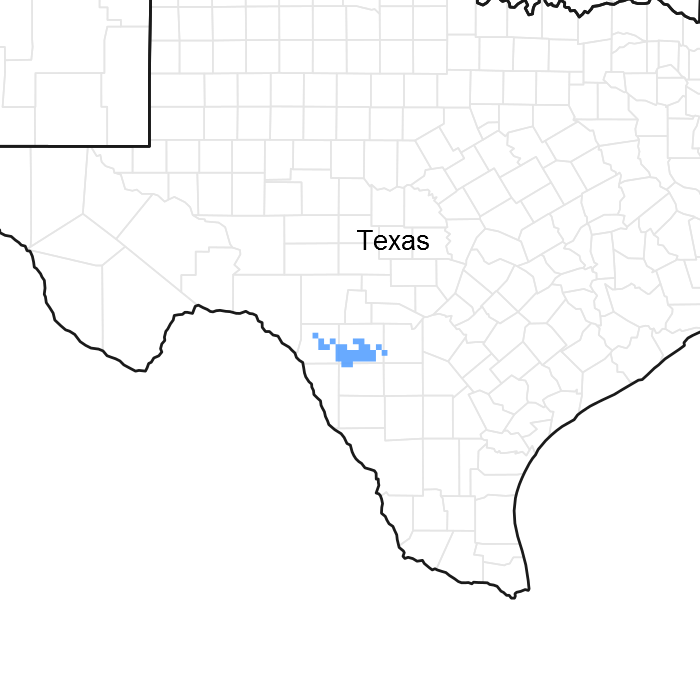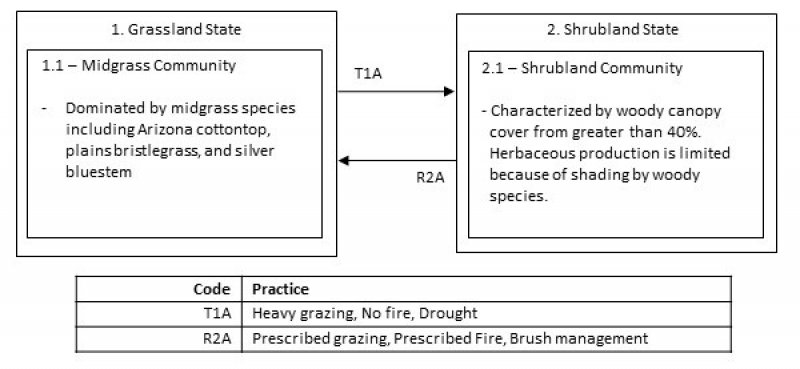
Natural Resources
Conservation Service
Ecological site R083BY001TX
Igneous Hill
Last updated: 9/19/2023
Accessed: 12/22/2025
General information
Provisional. A provisional ecological site description has undergone quality control and quality assurance review. It contains a working state and transition model and enough information to identify the ecological site.

Figure 1. Mapped extent
Areas shown in blue indicate the maximum mapped extent of this ecological site. Other ecological sites likely occur within the highlighted areas. It is also possible for this ecological site to occur outside of highlighted areas if detailed soil survey has not been completed or recently updated.
MLRA notes
Major Land Resource Area (MLRA): 083B–Western Rio Grande Plain
Major Land Resource Area (MLRA) 83B It makes up about 9,285 square miles (24,060 square kilometers). The border towns of Del Rio, Eagle Pass, Laredo, and Zapata are in this MLRA. Interstate 35 crosses the area just north of Laredo. The Amistad National Recreation Area is just outside this MLRA, northwest of Del Rio, and the Falcon State Recreation Area is southeast of Laredo. Laughlin Air Force Base is just east of Del Rio. This area is comprised of inland, dissected coastal plains.
Classification relationships
USDA-Natural Resources Conservation Service, 2006.
-Major Land Resource Area (MLRA) 83B
Ecological site concept
Igneous Hill sites are on uplands with greater than 15 percent gravels throughout the soil profile. The high amount of gravels are unique to the area.
Associated sites
| R083BY002TX |
Shallow Ridge |
|---|---|
| R083BY004TX |
Shallow Sandy Loam |
| R083BY025TX |
Clay Loam |
Similar sites
| R083AY001TX |
Igneous Hill |
|---|
Table 1. Dominant plant species
| Tree |
Not specified |
|---|---|
| Shrub |
(1) Acacia berlandieri |
| Herbaceous |
(1) Digitaria californica |
Click on box and path labels to scroll to the respective text.
Ecosystem states
| T1A | - | Absence of disturbance and natural regeneration over time, coupled with excessive grazing pressure |
|---|---|---|
| R2A | - | Reintroduction of historic disturbance return intervals |
